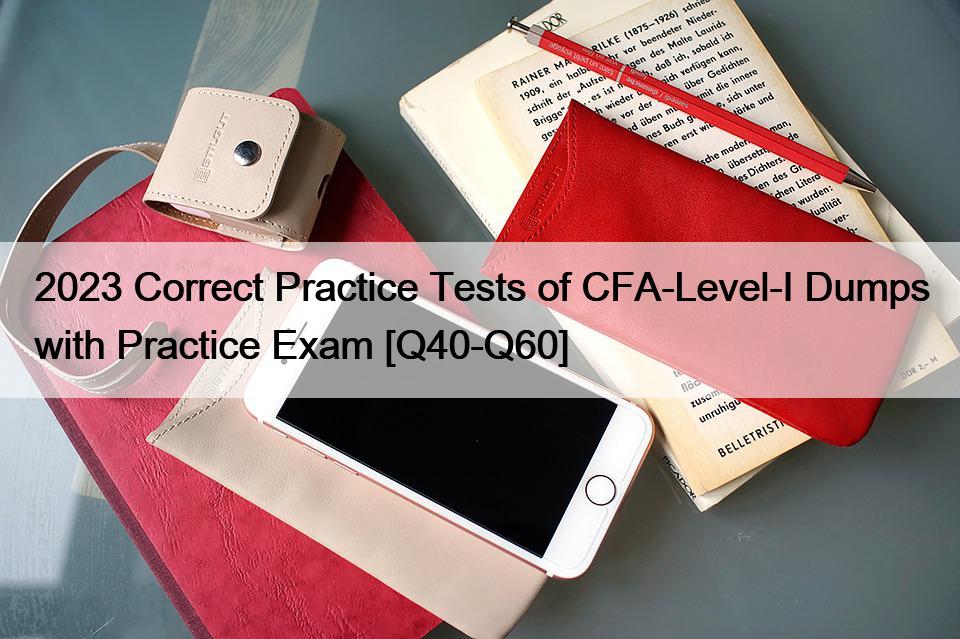2023 Correct Practice Tests of CFA-Level-I Dumps with Practice Exam [Q40-Q60]

2023 Correct Practice Tests of CFA-Level-I Dumps with Practice Exam
Certification Sample Questions of CFA-Level-I Dumps With 100% Exam Passing Guarantee
To succeed in the CFA-Level-I exam, candidates must have a strong foundation in finance and investment management. Candidates should also have strong analytical and problem-solving skills to solve complex financial problems. In addition, candidates should be proficient in financial modeling and analysis, as well as proficient in using financial software tools. The CFA-Level-I exam is a challenging exam, but with the right preparation and dedication, candidates can successfully pass the exam and move on to the next level of the CFA program.
Achieving the CFA Level I certification is a significant accomplishment and can open doors to a wide range of career opportunities in the investment industry. It is a testament to the candidate’s dedication and commitment to their profession and demonstrates a high level of expertise in investment analysis and portfolio management.
CFA-Level-I Sample Practice Exam Questions 2023 Updated Verified: https://www.trainingdump.com/CFA/CFA-Level-I-practice-exam-dumps.html
Leave a Reply